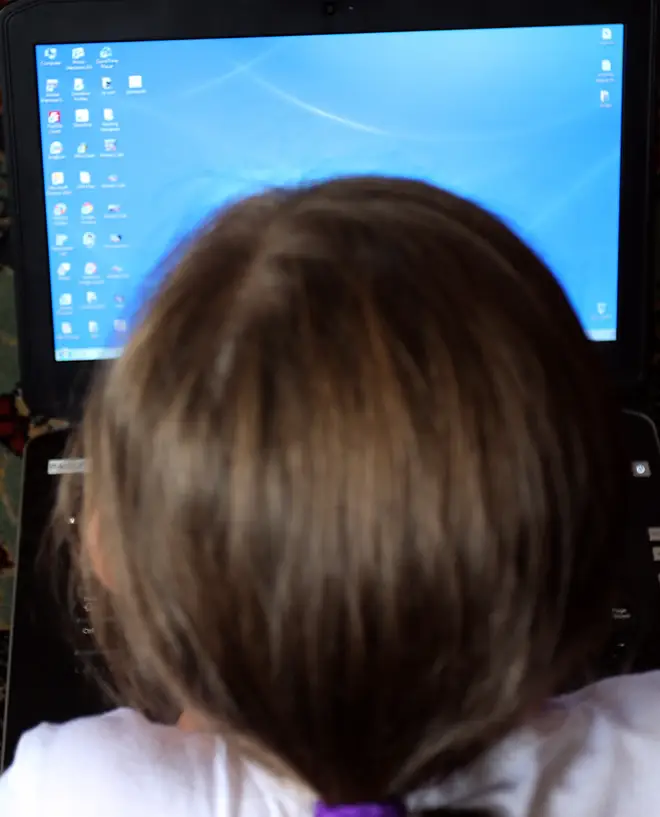
James O'Brien 10am - 1pm
12 January 2021, 00:04

Self-generated content can be created using webcams, very often in the child’s own room, the Internet Watch Foundation warned.
The number of child sexual abuse images and videos created by children has soared by more than three-quarters in a year, figures show.
Analysts from the charity Internet Watch Foundation (IWF) sifted through 299,600 reports of potentially illegal material in 2020, up 15% from the previous year.
More than half (153,350) contained images or videos of children being sexually abused, a rise of 16% from the previous year.
Of these, 68,000 reports included child abuse content that was “self-generated” – a 77% rise from the 38,400 reports containing child abuse material produced by children in 2019.
It means 2020 was the worst year on record for the amount of child sexual abuse material identified online and removed.
The IWF figures show that 44% of the child sexual abuse content dealt with by the organisation last year involved self-generated material, compared with 29% in 2019.
The Home Office said the rise was “deeply concerning”.
Self-generated content can include material filmed using webcams, very often in the child’s own room, and then shared online.
In some cases, children are groomed, deceived or extorted into producing and sharing a sexual image or video of themselves.
Some of these videos contain Category A material – the most severe level of abuse.
IWF chief executive Susie Hargreaves said: “What was already a recognised phenomenon has now cemented into a grave and widespread threat to our children.
“This year, our analysts have warned there are whole online communities of sexual predators who devote themselves to finding and tracking down children on the internet, so as to bully and coerce them into abusing themselves sexually.”
Asked about the impact of the coronavirus pandemic on the rise, she told the PA news agency: “We can’t say definitively, but it makes sense when you realise children are inside and online for many more hours a day, and also perpetrators are indoors online searching for children.”
Ms Hargreaves said 79% of the self-generated abuse material seen last year was produced by girls who analysts believe are between 11 and 13 years old.
But an increasing number of younger children are producing material, and she has seen videos of girls as young as five and six.
One video she remembers involves a young girl lying on her bed, following instructions from a laptop, and engaging in category A-level activity. An adult can then be heard shouting “dinner’s ready”.
She said: “This is a particularly vulnerable group of really young children who are emotionally and physically not capable of realising what they are up against.
“Very easily flattered, very easily tricked, very easily forced into sharing very intimate images of themselves, totally unaware that these are being recorded and then shared on child sexual abuse websites.
“Our message is very much not about scaring or pressurising parents… but saying that you need to have age-appropriate supervision for children when they’re on the internet.”
In November, MPs announced they had launched an inquiry into the “disturbing” rise of self-generated material.
The All-Party Parliamentary Group on Social Media will investigate the problem, amid growing warnings of online communities “devoted” to contacting and grooming children.
Home Office minister Victoria Atkins said the department will help fund a campaign to support parents in starting conversations with their children about online safety, and help young people spot signs of coercion.
She said: “The rise in self-generated indecent images of children is deeply concerning. Posting and sharing such images poses psychological harm to children, including feelings of distress and embarrassment.
“I am delighted that Home Office funding is being used to support the development of the IWF’s campaign to tackle youth-produced sexual imagery.”
Andy Burrows, head of the child safety online policy at the NSPCC, said: “The sharp spike highlights how the pandemic has increased the vulnerability of young people to this abuse, but the heart of the problem lies in the lack of investment in fundamental safety features on high-risk livestreaming and video chat sites.
“The only way to properly address this is for the Government to act quickly and bring forward a comprehensive Online Safety Bill as soon as possible in 2021.”